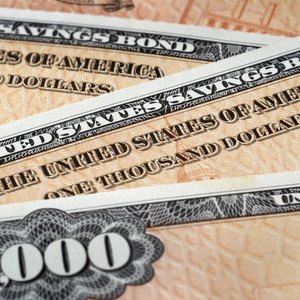
Bonds are generally long-term investment vehicles. They take several years to mature, and they earn interest during each year the investor holds onto them. Many bonds pay interest to investors twice a year, or on a semiannual basis. Investors can calculate the rate of return on these bonds, also known as the bond yield, which tells them how much money they are likely to earn if they purchase the bond and keep it until it matures. Over the time you own a bond, you may often wonder how much you're earning on your bond. Fortunately, there are calculations you can perform that will help you determine your bond yield on an ongoing basis.
Tips
To calculate the semi-annual return rate of your bonds, you can utilize a series of simple calculations. These include dividing the annual coupon rate in half, calculating the total number of compounding periods, and multiplying the bond's current face value by the semiannual interest rate in order to determine the semiannual payment amount.
Determining the Purchase Price
Write down information about the bond. To calculate the semiannual yield on a bond, you need to know the bond's purchase price and par value in addition to its annual coupon rate and how many years are left before the bond matures.
Calculate the Semiannual Yield
Divide the annual coupon rate by two to get the semiannual rate. For example, if the annual rate is 6 percent, the semiannual rate is 3 percent.
Multiply the years to maturity by two to get the number of compounding periods remaining until the bond reaches maturity. For example, if the bond will reach maturity in four years, there are eight compounding periods left before the bond matures.
Multiply the bond's face value by the semiannual interest rate to determine the semiannual payment amount. For example, if the bond's face value is $1,000 and the semiannual interest rate is 3 percent, the semiannual payment rate is $30.
Find the Semiannual Bond Yield
Use a financial calculator to estimate the semiannual bond yield. You cannot calculate the precise yield because of market factors. Financial calculators can estimate the yield with greater precision than you can figure by hand. Enter the amount you paid for the bond as a negative number for the bond's present value, or PV. For example, if you paid $900 for the bond, enter "-900" as the PV value. Enter the bond's total value as the future value, or FV. For example, if the bond is worth $1,000, enter "1,000" as the FV value. Enter the semiannual payment amount as the PMT value. Enter the number of compounding interest periods left as the "n" value. Press "i" on your calculator to determine the semiannual yield rate.
References
Writer Bio
Jack Ori has been a writer since 2009. He has worked with clients in the legal, financial and nonprofit industries, as well as contributed self-help articles to various publications.

